
A ground squirrel yells at us from the safety of a tree.

This is a California Ground Squirrel. Clearly their name is a bit misleading regarding habitat... or this little guy REALLY took a wrong turn in Albuquerque!

A cicada shows its clearly not the brightest of bugs as it plants itself directly in the center of the parking lot.
This was also the beginning of the Warner Point Nature Trail, a lovely informative trail that led to Warner Point (where the gorge is 2,772 feet deep). But we were still quite worn from our morning's adventure. Several kiosks used comical pictures to explain the dangers of the canyon.

Don't feed the animals because it makes them sick. (I like how sneaky the guy looks, as if this is some kind of odd fettish! Very Far Side-esque.)

Don't be an idiot, basically.

Ditto.

Don't drop stuff over the edge. A pebble dropped from the rim can reach a speed of 120 miles per hour when it hits the bottom.

Keep an eye on the road when driving.

Be informed about hiking in the canyon. (Uh... the faces are just creepy!)

Ok, not much funny about this one.
We started the drive back, stopping first at Sunset View.


The Great Unconformity (my favorite!): Each layer of rock marks a span of geological time. Sometimes, layers representing certain spans of times are absent. Either nothing was deposited or they were completely eroded away. This gap in the geological record is called an unconformity.
The Great Unconformity is a HUGE gap in the rock record. It can be seen in several places around the world. Here, Entrada Sandstone (165 to 170 million years old; colored in green) rests directly upon Precambrian metamorphic rocks of granite and schist (rocks with no fossils or only fossil bacteria; rocks colored in grey), meaning that over a billion years of geological history has vanished (1.2 billion years represents about 25% of the earth's history). While there are theories (erosion, not a lot of rock created in the first place, etc), what really happened to the rocks in between remains a mystery.


Rapids below


Hang on!

After that came Dragon Point. Finally we could guess why it was so named!

Gazing into the depth of the darkening canyon
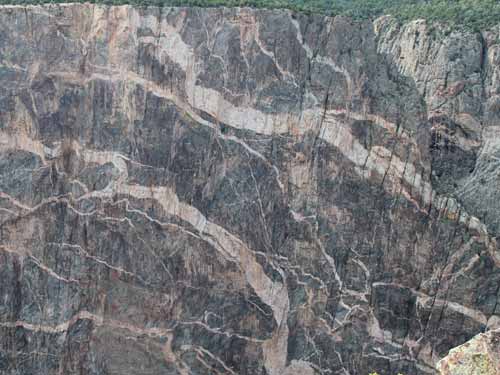
Can you see the dragons?!...

... How about now? Ok, ok... just use your own imagination then.


This amazing landscape was also filled with...

... lots of wood pictures! Oh c'mon, you know you've been missing them as much as I have.

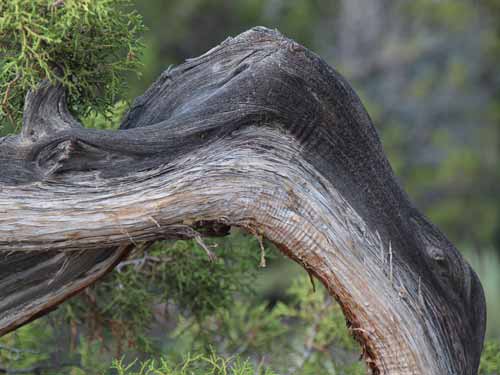


Me and wood
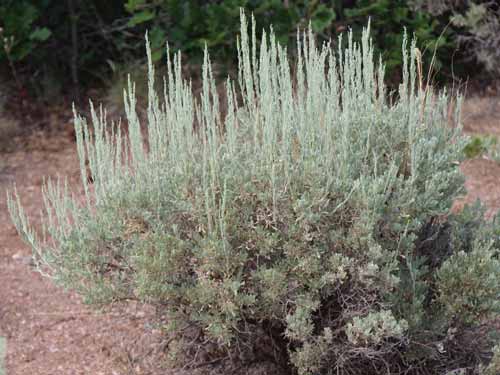
Regan thinks this plant looks like someone scared it!
Cedar Point was a lovely trail lined with numerous informative signs about the local trees, shrubs and other plants, as well as various canyon and rock formations.

The view from Cedar Point
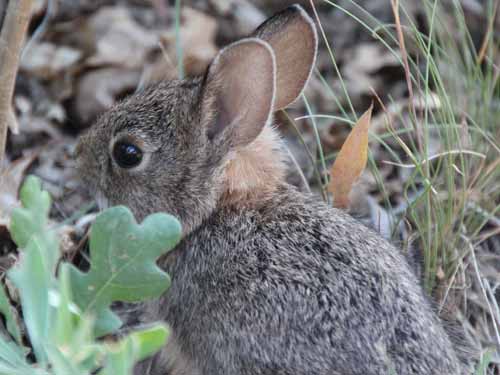
This is Micro-bunny. He was VERY small... probably only the size of my fist (which, as we've seen from our experiments with the human heart in the Fruita Dinosaur museum, is quite small!). He was sitting motionless just off the trail. No matter how close we got, he didn't move. Mom must have told him to stay put, so he was.

Serviceberry, a member of the rose family, was a valuable shrub for the Native Americans of the area. They ate the berries and made arrow shafts from the branches.
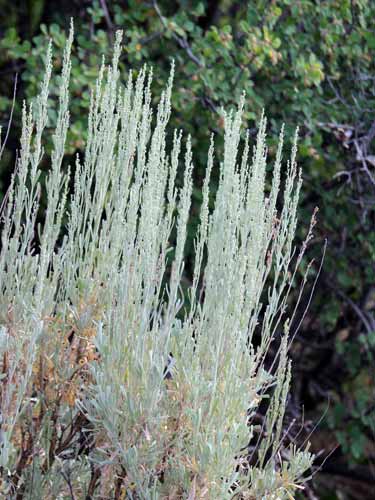
Regan's frightened plant is sagebrush, an important source of food for deer. It also has a wonderful smell!

Wild Buckwheat is also called Sulphur Flower.

We saw a much larger rabbit hopping about nearby. Mom, perhaps?

The distant West Elk Mountains were originally great domes of rock called laccoliths, pushed up by molten magma from far beneath. Now they have eroded down into peaks.

Yucca is actually a member of the lily family, not a cactus. It is also called soapweed, since the Native Americans could use its roots as such.

Mountain Mahogany serves as deer food. The Native Americans also made a red dye from the roots. These long, fuzzy things are the seeds.

The Utah Juniper can be identified by its scaly leaves and berries. They can get to be quite old, even though they might remain small. This is due mostly to the harsh conditions and shallow soil of the Black Canyon.
Many junipers are mistakenly called cedars. True cedars are native to the Middle East. Other differences are: cedars have two distinct flowers while junipers normally have a single flower; junipers normally have courser leaves; cedars love cooler moist soils but junipers can be a semi-arid plant; cedars have a woody cone while junipers have more of a berry; the cedar is a very large tree while a juniper is usually no more than 40 feet (the record is around 100 feet... which is still small for a cedar).

It's the cedars that tend to give all the ornate wood shapes, twisted and gnarled in their quest to survive here.

Gambel oak was named after the American naturalist William Gambel (1823–1849). The trees rise in clumps from a common underground stem system. Acorns are also an important food.

Singleleaf Ash is different from the ash trees back East in that it has a single leaflet on each stem. It also has the leathery leaves that many desert plants have.
Micro-bunny was still in the same spot when we returned. I suppose stillness is his best defense at this age since most predators will only notice him if he moves. We drove to the next stop, Painted Wall View, then walked a short ways down the road to our final overlook, Chasm View. There was still Devil's Lookout left, but it was a longer walk, the light was fading, and let's face it, we were just plain tired. Besides, the view probably wasn't too much different from what we had seen so far anyway.
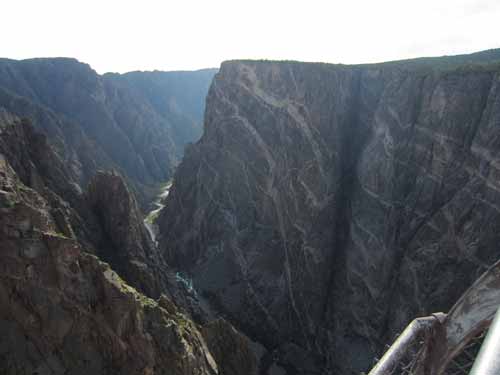
At 2,300 feet, Painted Wall is the highest cliff in Colorado. The patterns of rock were created more than a billion years ago when molten rock was squeezed into fractures and joints in the existing rock. Unlike a painting, these patters are 3-dimensional. If you were to slice off a section of cliff, an entirely different pattern would be revealed.


Evidence of a seasonal waterfall, perhaps?

Chasm View
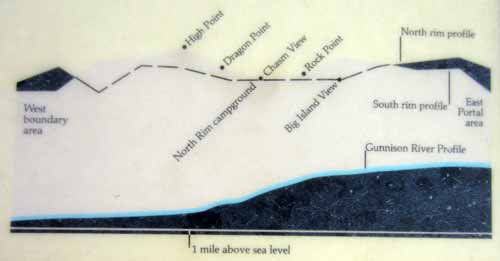
The walls of the canyon range from 2,700 feet (near Warner Point) to 1,750 feet at the Narrows (a short distance upstream from here). The Narrows, between here and Pulpit Rock, is also the narrowest section at only less than a quarter mile across.




We drove back to camp. It had cooled off a bit finally. Chipmunks hopped around like bouncing marbles. They had such a spring in their step! Little birds flitted everywhere.
As we were sitting at the picnic table having another nutritious dinner, a tiny brown and white weasel ran from the bushes, grabbed a dead mouse nearby that we hadn't noticed before, then ran back into a clump of trees. The whole thing happened so lightning fast. The mouse was almost as big as the weasel itself, and it had a very awkward time running with it. As soon as it disappeared, a chipmunk in the very same clump of trees began chattering very loudly at it. It sounded not unlike a car alarm. But unlike a car alarm, the silly thing simply wouldn't stop!

